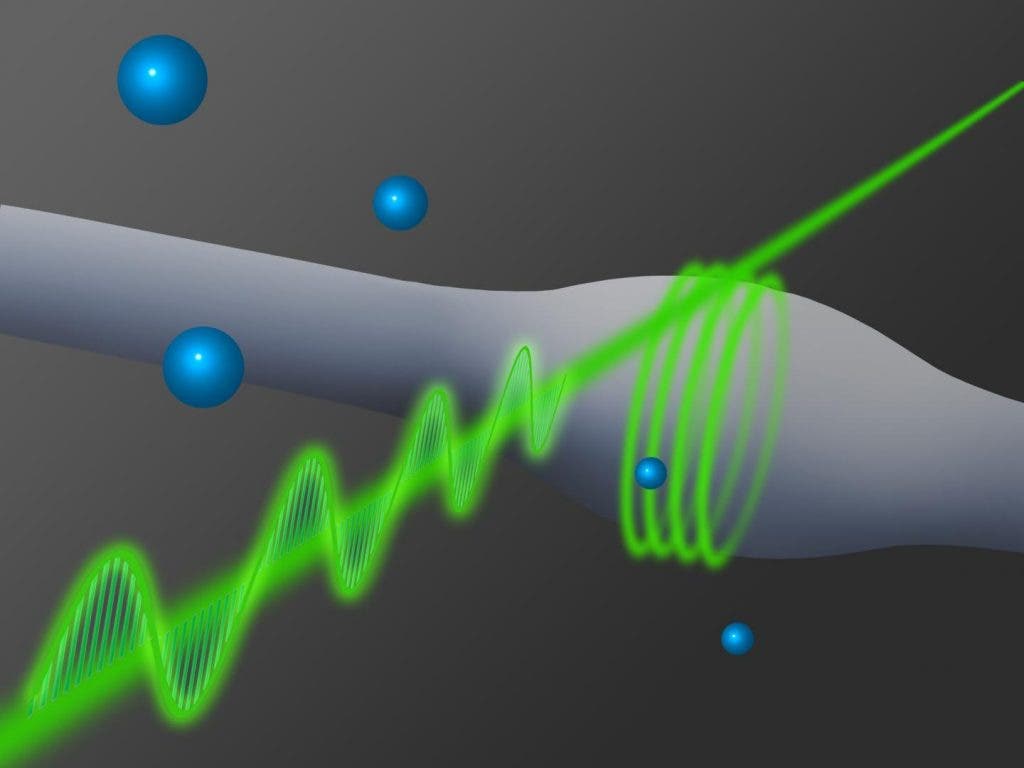Austrian researchers at the Vienna Univ. of Technology (TU Wien) made just two photons interact with each other, a major feat that might have profound implications for quantum technology applications – computing, information teleportation and security.
Two photons, one interaction

In a free medium, light waves – and consequently photons – do not interact between each other. Sometimes this interaction is desirable, and in 1936 H. Euler demonstrated that a photo-photon interaction is possible in a quantum electrodynamics frame, yet this is visible only at high energies in set-ups that makes us of particle accelerators. Optically, photons can be coaxed to interact in a “non-linear” medium, where high intensity beams of light are released in vacuum. The light has an effect on the properties of these materials, and the material in turn influences the light, which leads to an indirect coupling between photons. Because of the high intensity, countless photons are present. The latest developments in Vienna, however, demonstrate an unprecedented degree of control and resolution: only two photons were manipulated to interact with one another. Theoretically, this means that a slew of quantum applications are now possible!

(Photo Credit: TU Wien)
The researchers made use of a nifty trick to coax the two photons to interact. In fact, the interactions is so strong that the phase of the photons is changed by 180 degrees.
“It is like a pendulum, which should actually swing to the left, but due to coupling with a second pendulum, it swings to the right. There cannot be a more extreme change in the pendulum’s oscillation”, says Professor Arno Rauschenbeutel (Institute for Atomic and Subatomic Physics, TU Wien). “We achieve the strongest possible interaction with the smallest possible intensity of light.”
The system employed at TU Wien is largely made up of an ultra-thin glass fibre, coupled to a tiny bottle-like light resonator so that light can partly enter the resonator, move in circles and return to the glass fibre. This detour is what causes the photon’s phase to become inverted, but when a single rubidium atom is coupled to the resonator we’re in for an unexpected turn. Because of the rubidium atom, hardly any light enters the resonator, until two photons arrive at the same time.
[ALSO SEE] Quantum leap: bits of light successfully teleported
“The atom is an absorber which can be saturated”, says Arno Rauschenbeutel. “A photon is absorbed by the atom for a short while and then released into the resonator. During that time, it cannot absorb any other photons. If two photons arrive simultaneously, only one can be absorbed, while the other can still be phase shifted.”
Glass fiber for the quantum highway of the future!

(Photo Credit: TU Wien)
What’s pretty funny (hey, quantum mechanics!) is that there’s no distinction between the photons. There’s absolutely no way to tell which of the two photons is getting absorbed and which is released. When both hit the resonator at the same time, both of them together experience a phase shift by 180 degrees. Two interacting photons arriving simultaneously show a completely different behaviour than single photons, according to the paper Nature Photonics.
[INTERESTING] First-ever working quantum network lays foundation for the future’s quantum internet
“That way, a maximally entangled photon state can be created”, says Arno Rauschenbeutel. “Such states are required in all fields of quantum optics – in quantum teleportation, or for light-transistors which could potentially be used for quantum computing.”
While this may sound like a big deal (it really is), the tech involved is rather rudimentary. Fiber glass has been used for decades and nowadays there are hundreds of thousands of miles worth of fiber optic installed all over the world to serve your internet needs. Nano glass fibres and bottle-resonators are perfectly compatible with existing technologies, as well, so we already have the logistics at our disposal to install the network of the future – a super-secure and super-fast (instant, as in teleportation) quantum network. We just need to work out a few tidbits … like the physics behind. Trust me, that’s no easy task. Get ready for the future, until then.






